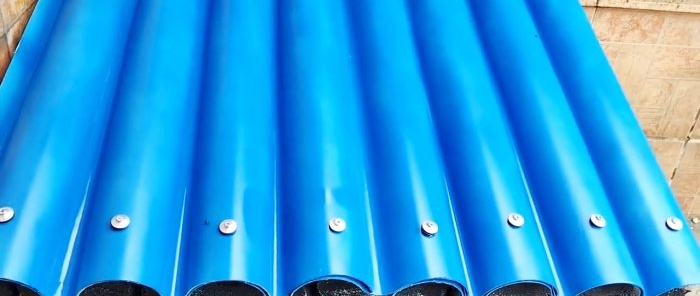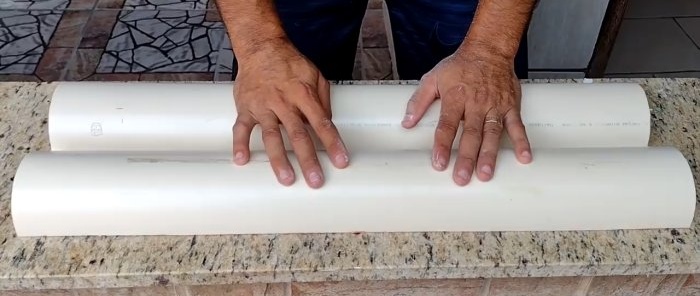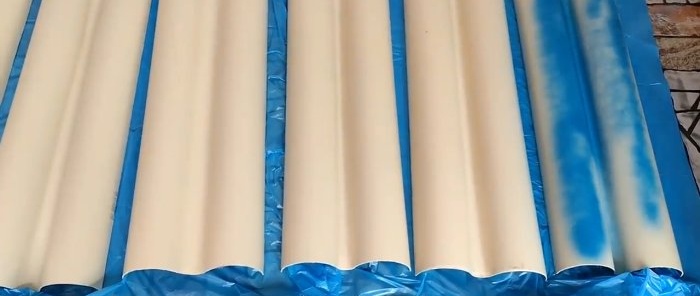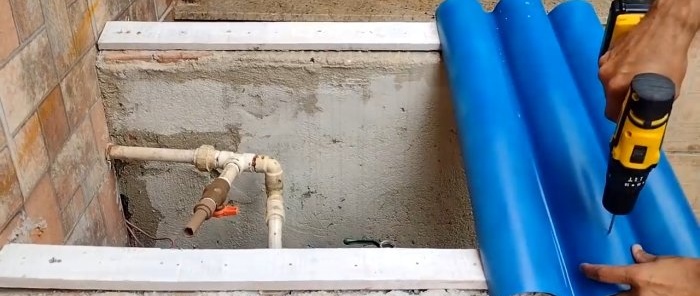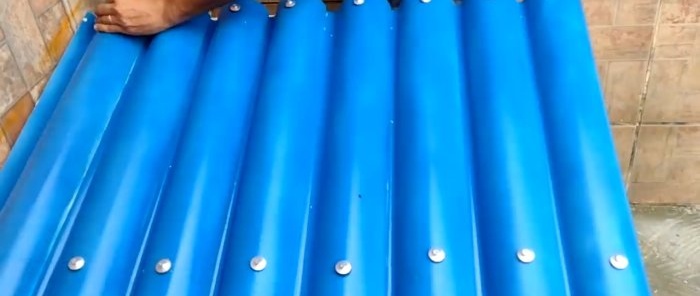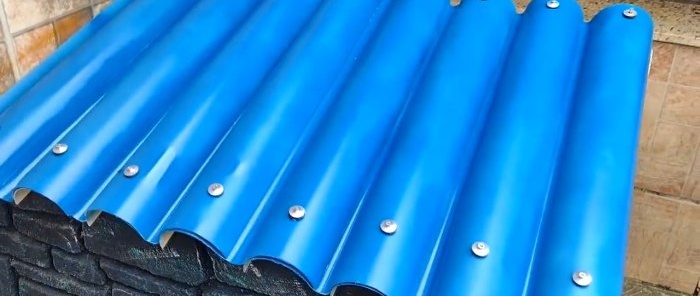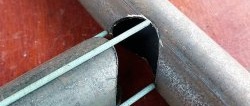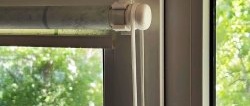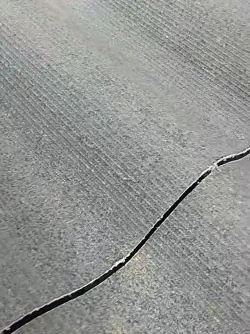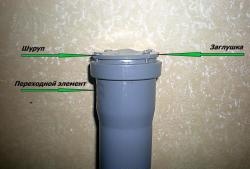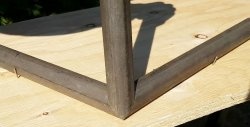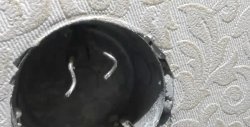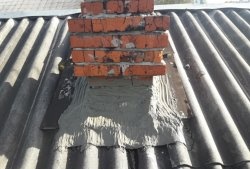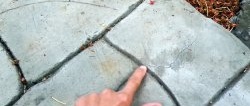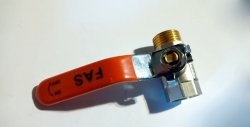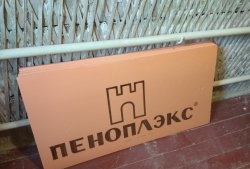If after laying or reconstructing communications there are pieces of plastic pipes left, then they can also be put to use, transforming them into something useful and necessary for the household or summer cottage.
How to make slate from leftover PVC pipes
We take at random a plastic pipe with a diameter of 100 mm and a length of 660 mm and try to make plastic corrugated slate from it. To do this, we lay the pipe on a flat horizontal surface, apply a rigid ruler or a block with smooth and parallel edges to it in the longitudinal direction so that one of them touches the horizontal base, and the other touches the side surface of the pipe. We draw a straight line along the upper edge of the ruler or block, which represents a generatrix for the side cylindrical surface of the pipe.
Using a grinder or circular saw, we cut the pipe along the generatrix drawn on the side cylindrical surface of the pipe. We measure 157 mm on both sides of the pipe from the cut along the cylindrical surface and draw another generatrix.If we cut the pipe along the second generatrix, we would get 2 halves, since the circumference of the pipe is C = πD = 3.14 × 100 = 314 mm. Dividing by 2, we get 157 mm.
But our plans do not include a second cut, and we replace it by uniformly heating the cylindrical surface of the pipe along the second generatrix along the entire length using a gas burner flame or a jet of hot air from a hair dryer. Then we quickly move the pipe halves apart along the horizontal surface and form a bend with a small radius between them and leave the resulting shape alone until the plastic cools completely.
Next, using a hard abrasive sponge for washing heavily soiled dishes, remove the shine from the surface of the resulting elements, wipe with a cloth and paint with a spray gun or aerosol can in the required color.
Having thus produced a sufficient number of products, we connect them into plastic corrugated slate by overlapping the halves. To add rigidity and maintain shape, we connect them along the edges of the double waves with screws or rivets, having previously drilled holes using a drill.
We generously water the resulting plastic wavy surface with water and clearly verify its absolute tightness. By the way, from the remains of a plastic pipe you can make not only corrugated slate, but also tiles, curbs, gutters, etc.
